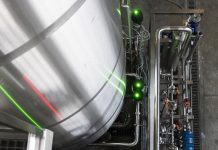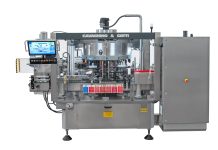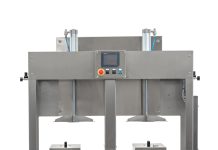Their vineyard foliar application affects the grape and wine volatile pool.
- Introduction
Recently, there is a trend towards a Sustainable Viticulture, where the conservation of natural resources and the protection of the environment is one of their main objectives. Recent scientific results have shown that grapevines are able to absorb volatile compounds present in aqueous oak extracts, when they are applied foliarly, affecting the aromatic composition of grapes and wines. The chemical composition of vine-shoots aqueous extracts can be compared to oak extracts, so for this reason the main objective of this study is to return to the vineyard the vine-shoots components left and from them to the grapes and to their corresponding wines. Special attention is carried out on the grape and wine volatile pool. In this way, the vineyard cycle would be closed.
- Materials and methods
Vine-shoot wastes of two different Vitis vinifera cultivars (Airén and Moscatel) were sampled in Castilla-La Mancha Spanish region, 4 months after the harvest of 2014, by randomized selection. After drying, the samples were grounded (10-mesh) to get homogenous sawdusts. Fifty grams from each sample were extracted by conventional solid-liquid aqueous extraction according to Sánchez-Gómez et al. (2014). The resulting extracts were in case of Airén and Moscatel vine-shoot wastes: AVS and MVS, respectively. Different extract treatments were carried out on 6 strains of Airén grapevines located in Jumilla Spanish region (Southwest of Spain) 7th day post-veraison. Three hundred mL of each formulation was applied evenly per plant by spraying over leaves. Grapes for each treatment were harvested on September the 9th and were processed separately by the winemaking traditional method on white wines.The varietal aroma potential index (IPAv) of grapes and wines was analysed using the IPAv Kit of Teknokroma (Barcelona), according to Serrano de la Hoz et al. (2014). This method is based on Salinas et al. (2012), but with spectrophotometric reading of glucose released by acid hydrolysis of the glycosidic aromatic precursors extracted. In wines, the aromatic varietal composition was determined by the method of Pardo-García et al. (2014) based on the extraction of volatiles by SBSE and determination by GC-MS.
- Results and Discussion
IPAv values from treated grapes were significantly higher compared to the control, being MVS lower than AVS treatment (Figure 1a). About the volatile liberation, AVS wine released most of its volatile compounds during fermentation (Figure 1b).
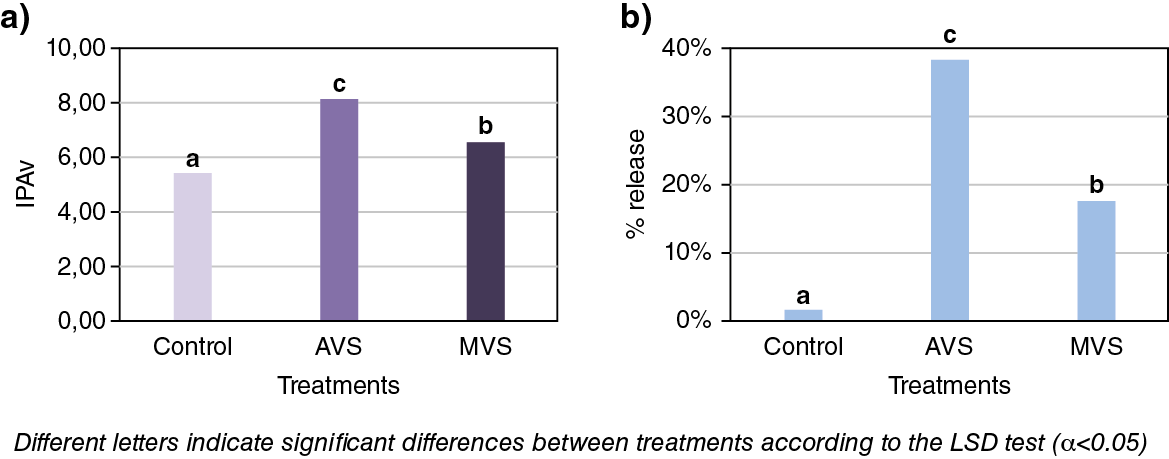
Norisoprenoids compounds (Figure 2) were more concentrated in treated wines compared with control ones. In MVS wine, the content of β-Damascenone (Figure 2a) and β-Ionone (Figure 2b) were significantly higher than in AST wine.

About terpenes (Figure 3), geraniol and geranyl acetone showed significant differences in treated wines respect to the control, being AVS wine more concentrated than MVS in geraniol (Figure 3a) and geranyl acetone (Figure 3b). The presence of geranyl acetone can be due to treatments application, since this compound was not quantified in control.
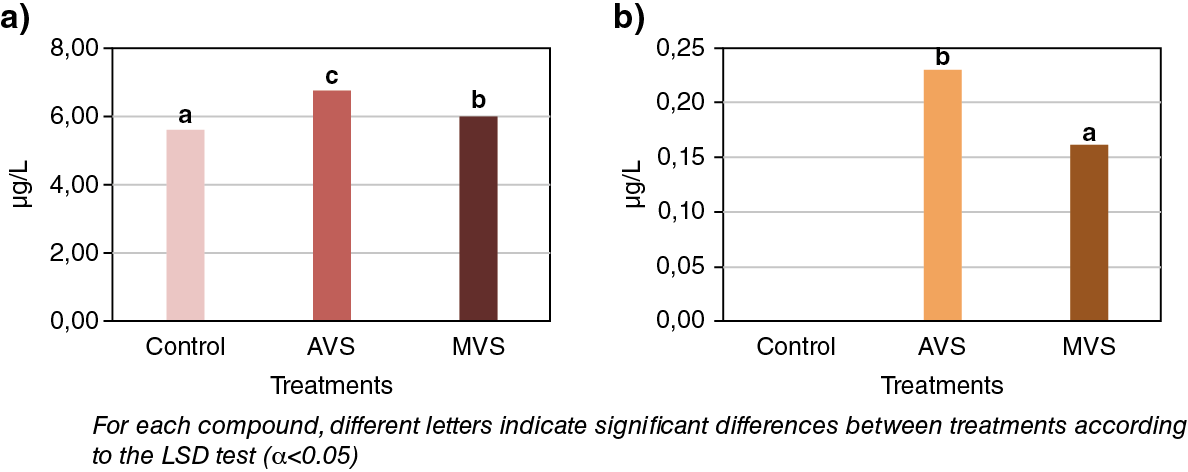
References
Pardo-García, A.I., De La Hoz, K.S., Zalacain, A., Alonso, G.L., Salinas, M.R., 2014. Effect of vine foliar treatments on the varietal aroma of Monastrell wines. Food Chemistry 163, 258-266.
Salinas, M.R., De La Hoz, K.S., Zalacain, A., Lara, J.F., Garde-Cerdán, T., 2012. Analysis of red grape glycosidic aroma precursors by glycosyl glucose quantification. Talanta 89, 396-400.
Sánchez-Gómez, R., Zalacain, A., Alonso, G.L., Salinas, M.R., 2014. Vine-shoot waste aqueous extracts for re-use in agriculture obtained by different extraction techniques: Phenolic, volatile, and mineral compounds. Journal of Agriculture and Food Chemistry 62, 10861–10872.
Serrano de la Hoz, K., Carmona, M., Zalacain, A., Alonso, G.L., Salinas, M.R., 2014. The varietal aroma potential index (IPAv), a tool to evaluate the quality of grape and wines, White and red. Web of Conferences, 37th World Congress of Vine and Wine.
R.L. Sánchez-gómez1; K. Serrano de la Hoz2; A. Zalacain1*; G.L. Alonso1; M.R. Salinas1
1Universidad de Castilla-La Mancha. E.T.S.I. Agrónomos y de Montes. Cátedra de Química Agrícola. Avda. España s/n. 02071, Albacete, España 2Betterrid, Carretera de Las Peñas (CM-3203), Km 3.2, 02071, Albacete, España *Amaya.Zalacain@uclm.es


